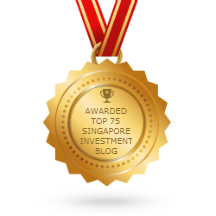My Investment Portfolio (February 2012)
February 2012 was another good month for investors. STI powered above 3000 points during the month before closing near 3000 points. Interest had been on companies that were reporting year-end results.
For this month, I have attended the following AGMs/EGMs - Yoma and Transview.
For my top 30 holdings, Orchard Parade appeared in the list again after dropping out for a long time. Its portfolio of assets had been speculated to be REITed out for quite sometime and the market likes its full-year result and special dividend. Main movers in the top 30 list include PSL Holdings, ABR Holdings, Aspial, VICOM and Sarin Technologies. ABR Holdings was mainly due to its proposal to dispose its profitable chocolates retail and distribution business.
I have bought the following companies from the open market this month - BRC Asia, Craft Print, Fischer Tech, Hiap Hoe, Hong Fok, Hor Kew, Kinergy, Koon Holdings, MITech, Noel Gifts, Popular, PSC Corp, Singapura Finance, Sin Ghee Huat, Singapore Reinsurance, Thai Village, Transview, UIS and UOI. As usual, there is no sales transaction done.
I have accepted the following voluntary cash/delisting offer - CHT. My shares in Beyonics had been compulsory acquired via Scheme of Arrangement. I have converted the following company warrants to shares - ASJ Holdings.
I have also participated in the following rights issues - JEL Corp and Plastoform.
As companies with financial year ending 31 December 2011 finished reporting their results, March 2012 is expected to be a quiet month. Companies will also be busy getting their annual reports published and sent out to shareholders. It will take time for me to digest all the results, and decide which AGMs to attend come April 2012.
My S'pore Stock Portfolio - Top Holdings, cash investment only (correct as at 29 February 2012)
Top 30 Holdings (Sing$ Denominated shares)
1. Jardine C&C
2. F&N
3. Noble Group
4. SembCorp Marine
5. SGX
6. UIS
7. A-REIT
8. Bukit Sembawang Estates
9. CapitaMall Trust
10. PSL Holdings
11. Viz Branz
12. KepLand
13. Singapura Finance
14. ABR Holdings
15. Sing Investment & Finance
16. Metro Holdings
17. Aspial
18. APB
19. VICOM
20. United Engineers
21. Hong Leong Finance
22. Sarin Technologies
23. The Hour Glass
24. Wheelock Properties
25. SP AusNet
26. Transpac Industrial Holdings
27. Orchard Parade
28. Fragrance Group
29. Keppel Corp
30. OSIM International
Top 5 Holdings (US$ Denominated shares)
1. Jardine Strategic
2. Dairy Farm
3. Hong Kong Land
4. Jardine Matheson
5. Mandarin Oriental
Top Holdings (HK$ Denominated shares)
1. Fortune REIT
2. Tan Chong International
Top Holdings (Aust$ Denominated shares)
1. AV Jennings
Top 5 Holdings (CPF OA investment)
1. Keppel Corp
2. Streettracks STI ETF
3. CapitaMall Trust
4. A-REIT
5. Challenger Technologies
My Hong Kong Stock Portfolio
1. Peace Mark Holdings - Under Voluntary Liquidation
My Unlisted Company Portfolio
1. Automated Touchstone Machines Ltd
2. Iconic Global Limited
3. Greatronic Limited
4. China Printing & Dyeing Holdings
5. General Magnetics
6. Fastech Synergy
7. Beauty China
8. Memory Devices
9. Jurong Tech
10. FM Holdings
11. Japan Land - Under Members' Voluntary Liquidation
12. Zhonghui - Under Judicial Management
13. FerroChina - Under Liquidation
14. FirstLink Investments
15. Maveric Ltd - Under Members' Voluntary Liquidation
My Unit Trust Portfolio:
http://www.fundsupermart.com/main/community/Portfolio_View.svdo?id=P199
Labels: Portfolio


